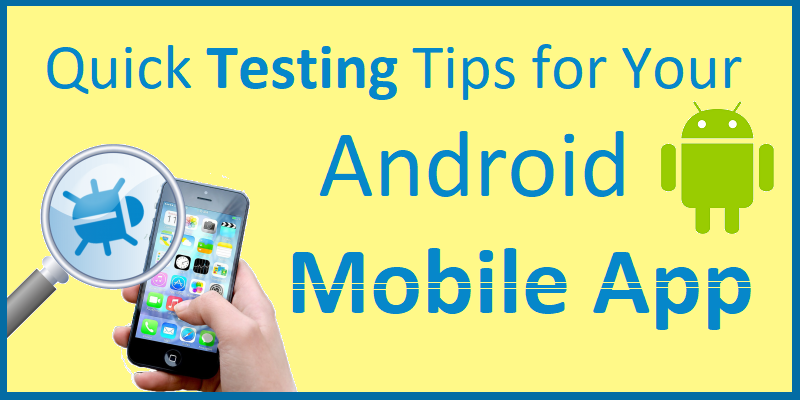
Quick Testing Tips for Your Android Mobile App to Make It Bug Free
Smartphones have gained much popularity and users are demanding feature rich and high quality mobile apps so that they can easily access the services or websites that they want. As a mobile app developer, it is really a challenging task to create a perfect Android mobile app that can stand out from the crowd. Ensuring that your app delivers the optimum services promised to the users it needs to undergo a thorough testing so that it is error free once it is launched.
Here in this blog, I will discuss with you some of the best practices that you should adopt while testing Android apps:
1 – Know Your Audience:
The most important and initial step is to identify your audience and understand their requirements. This is the main challenge faced by the mobile app developers as they have to design the app with high functionalities that fulfils user expectations. For this, you have to gather information related to the age of the users, mobile usage habits, gender, geo locations and etc. Getting user statistics will help to focus more on the app features.
2 – Test the App Against Various Hardware Features:
Today’s smartphones come with powerful hardware and sensors that are needed to interact with the users spread in various locations. If your app has anything related to sensors, then it must be thoroughly tested against specific features related to sensors. This will also apply in case of hardware features, microphones, camera, and so on.
3 – Test for Different Languages and Data Networks:
Your Android mobile app should be tested on different data networks in order to understand its ability to perform well, while switching from one network to another when the user is on the go. If your mobile app targets different countries, then it should support multiple languages. You should test your app to ensure that it support all the languages that it promises to offer the users.
4 – Know the Latest Mobile Testing Techniques:
As a tester, you should be aware of the latest mobile app testing techniques like classes, boundary values, equivalence and etc. Moreover, the knowledge of functional and non-functional testing methods for different Android apps are also required.
5 -Test on At Least Two Different Devices:
Before you begin the testing of your mobile app, it is suggested that you have at least two different Android devices so that your application works perfectly on all the devices. For this, you can easily find Android powered devices online.
6 – Test for Battery Issues and Standby Mode:
Your app should also be tested to find out if it can handle the standby mode. This is essential to test whether your app is updating the present view to get the latest data from the database. In the similar manner, it is also important to check the amount of battery that is consumed by the app. The best practice is to begin testing with a fully charged battery and then consider the state of the battery at regular intervals of 10 minutes to see how much battery was consumed.
7 – Usability Testing:
Your app should be user friendly and display any error message clearly. It should also provide clear instructions to the users as to how they can solve the errors in the app whenever they encounter then.
“To conclude, a good testing strategy and a plan are essential to ensure that your android app is completely free from bugs and for this you can hire a reputed mobile app testing service provider.”